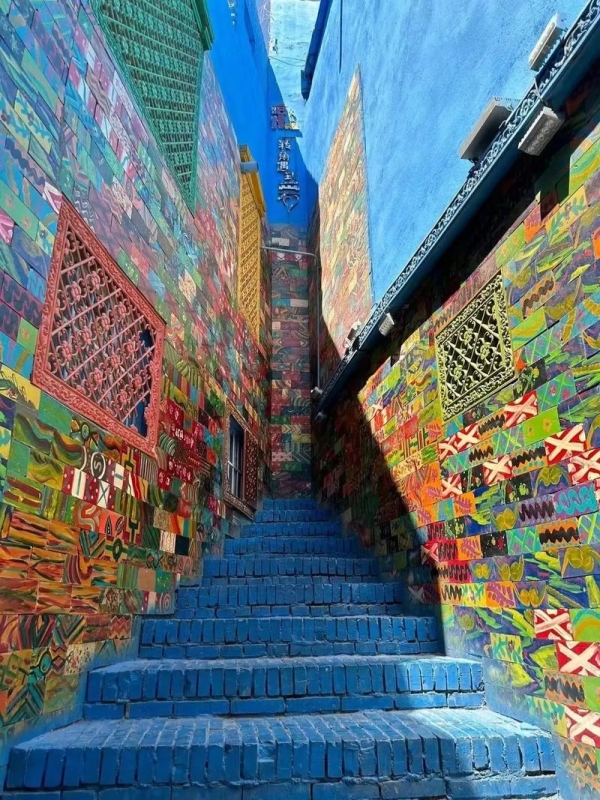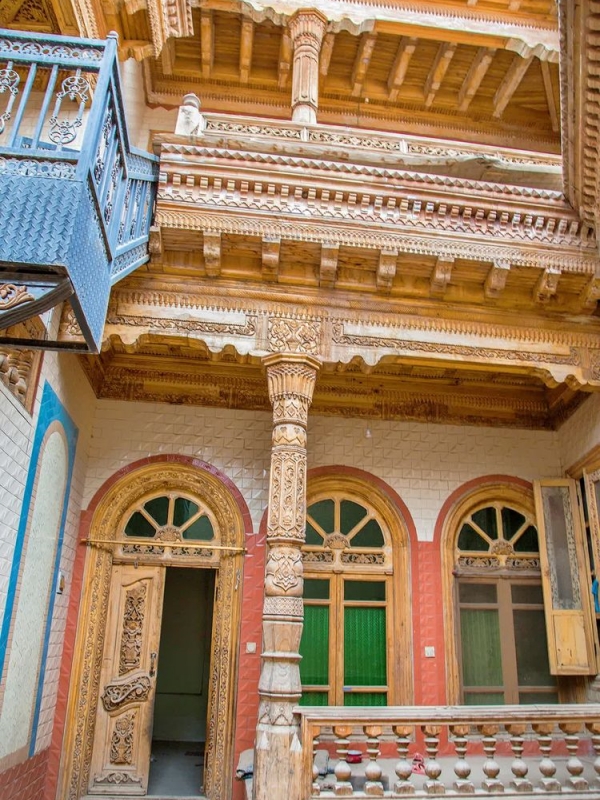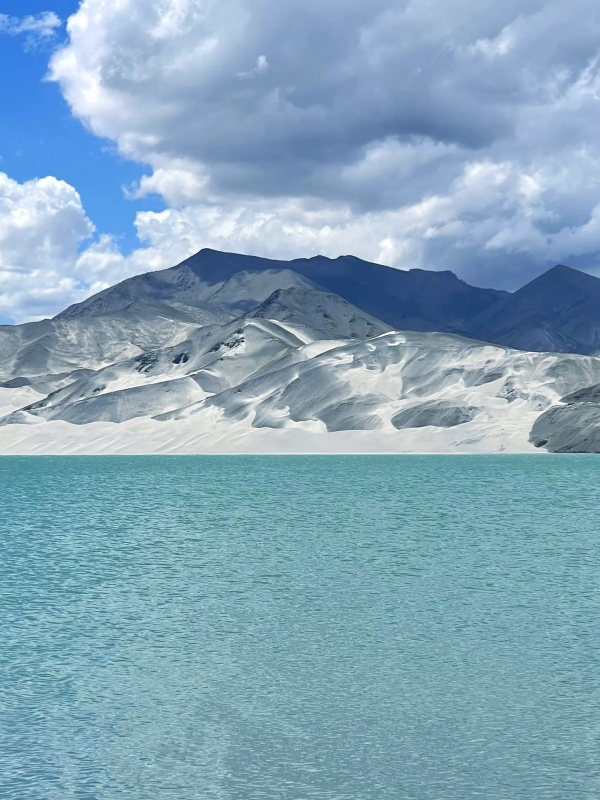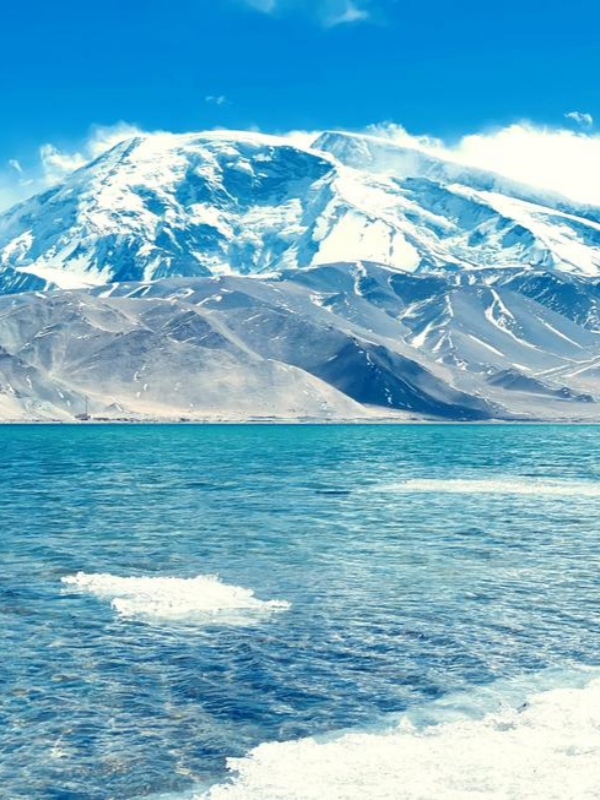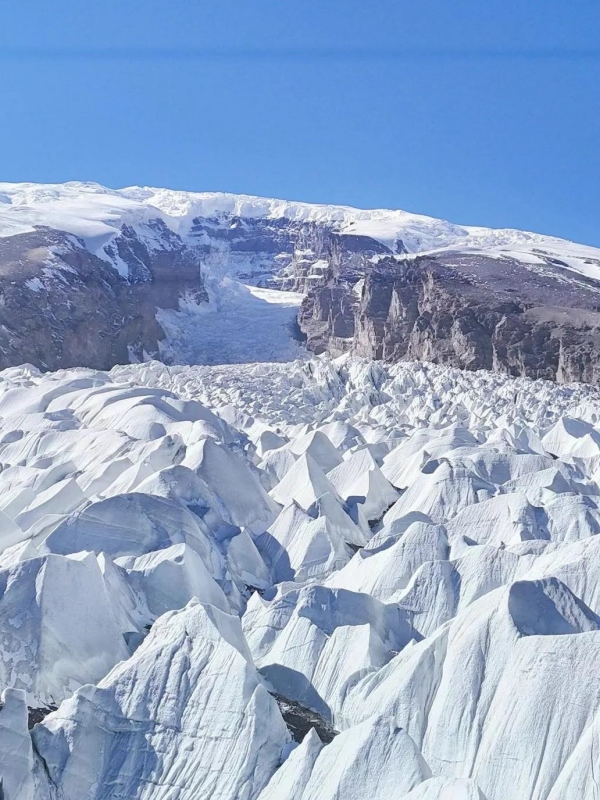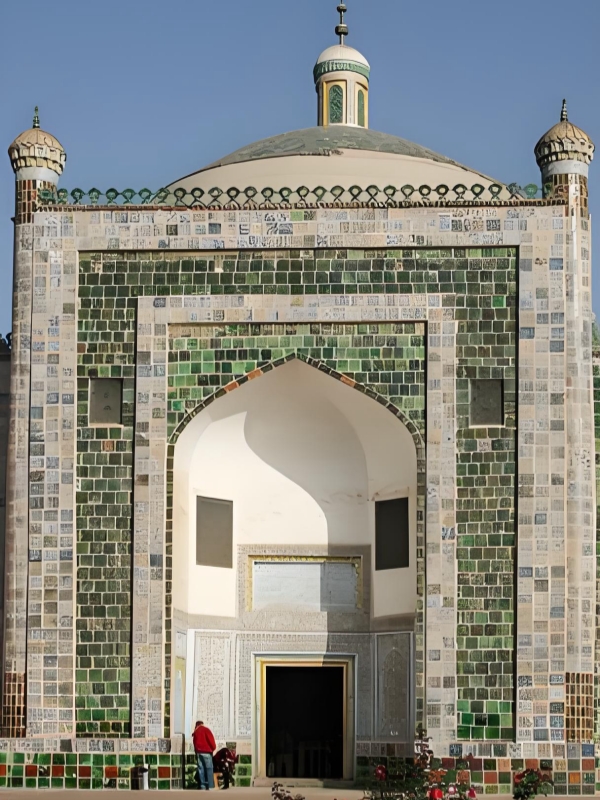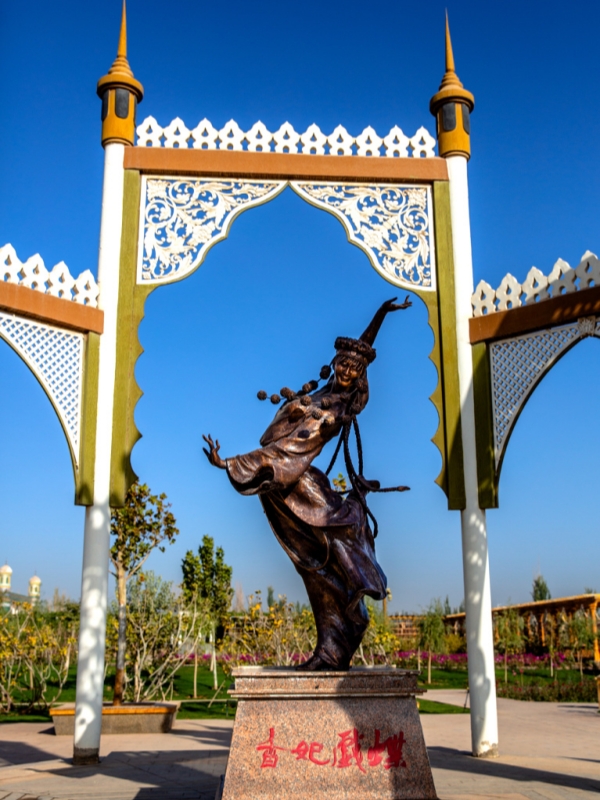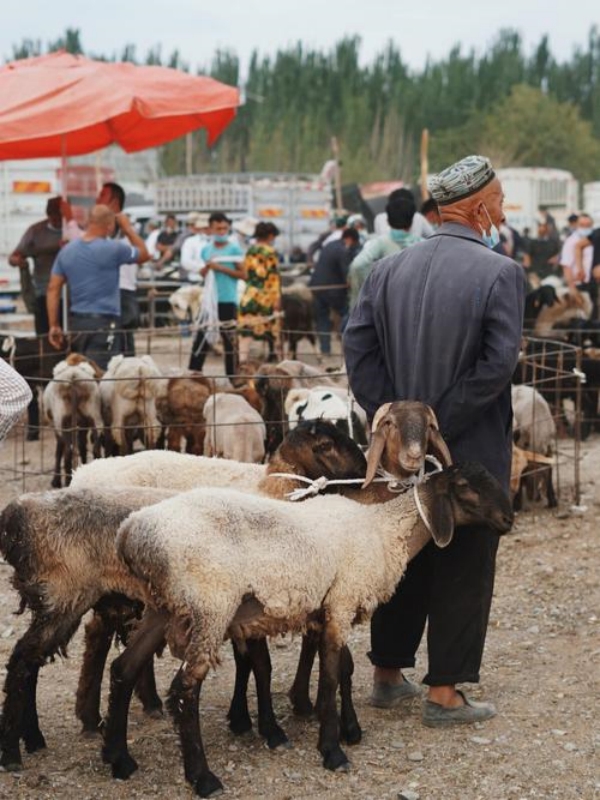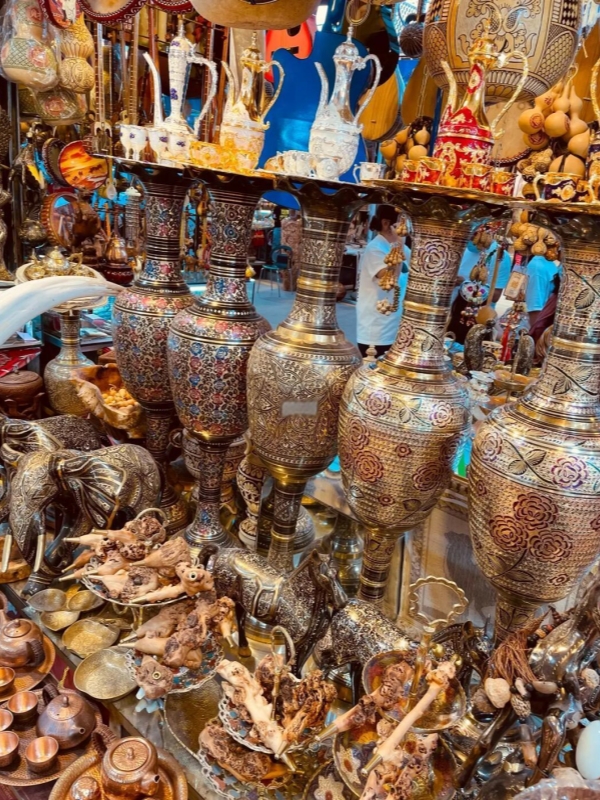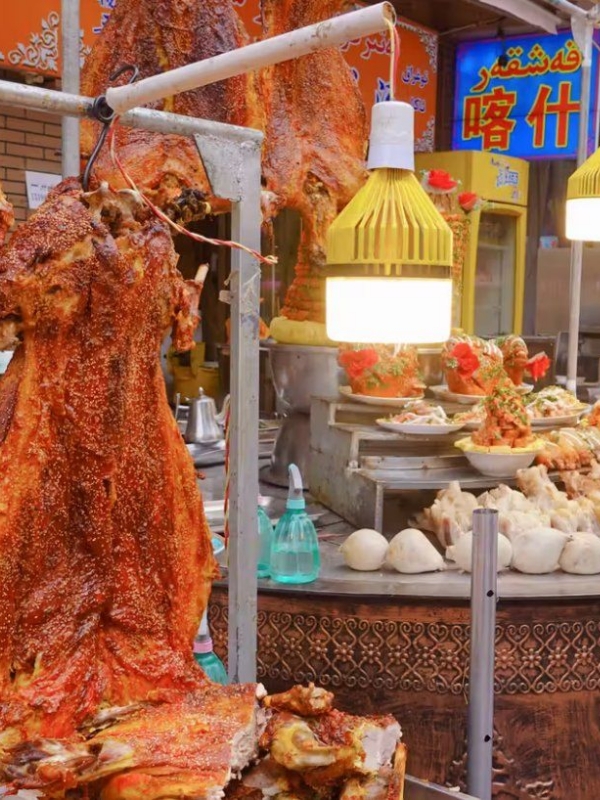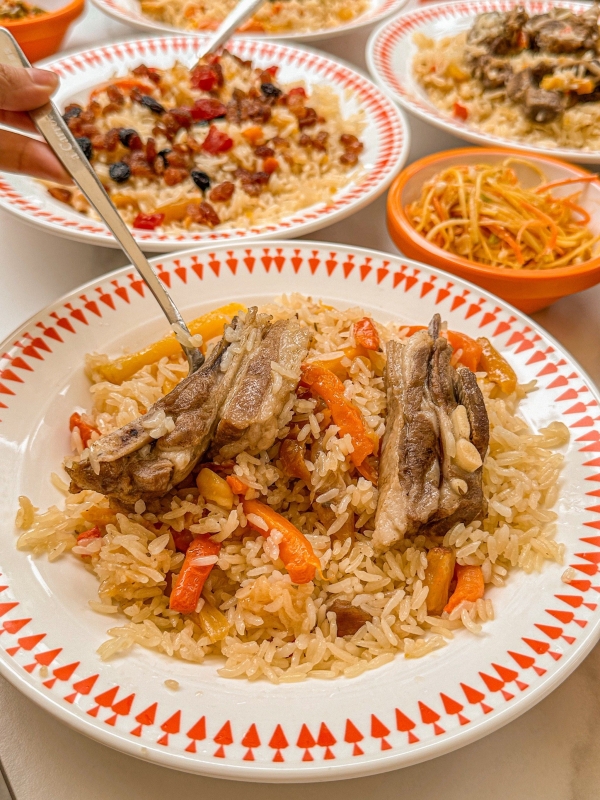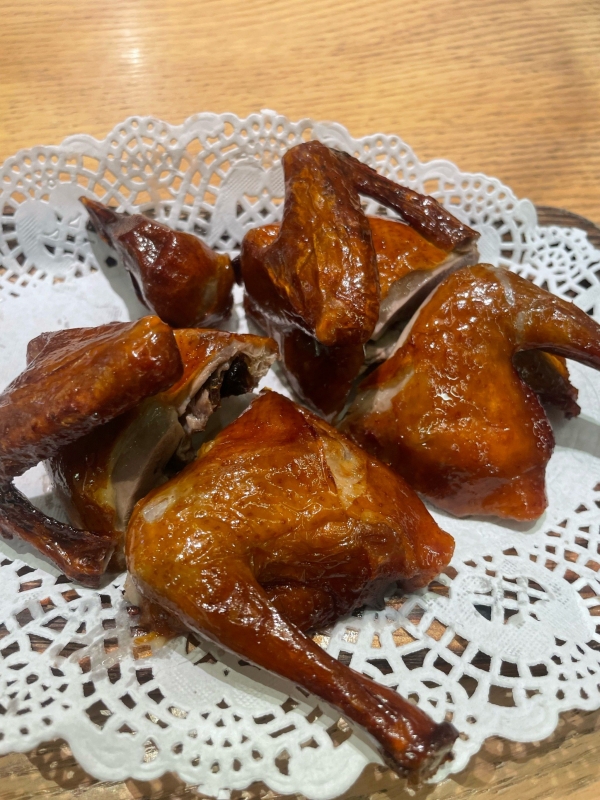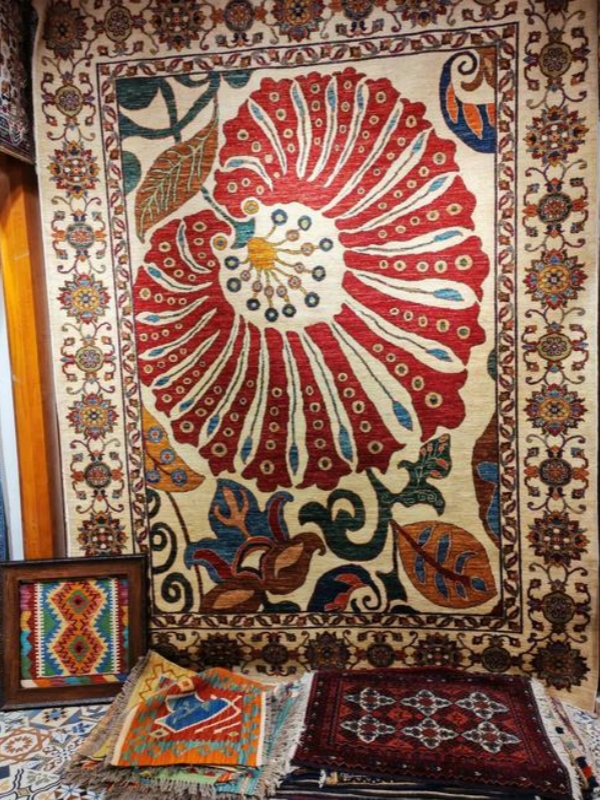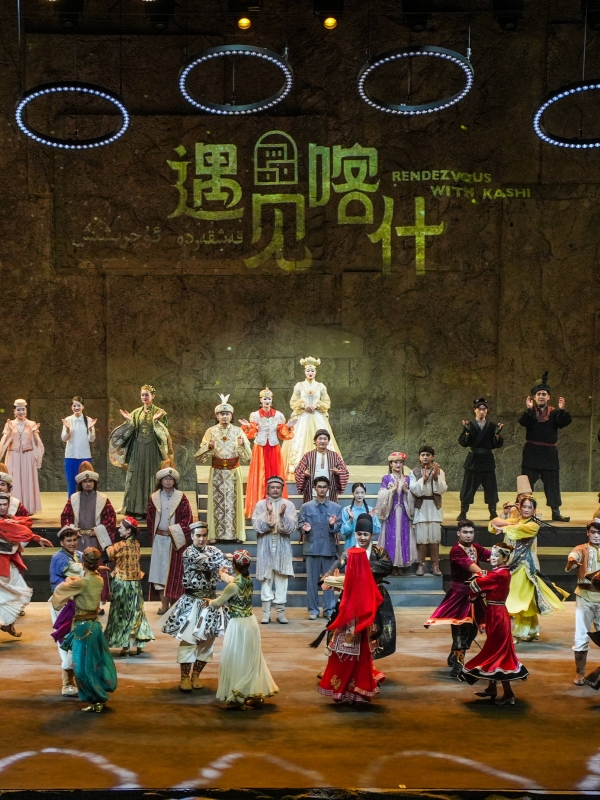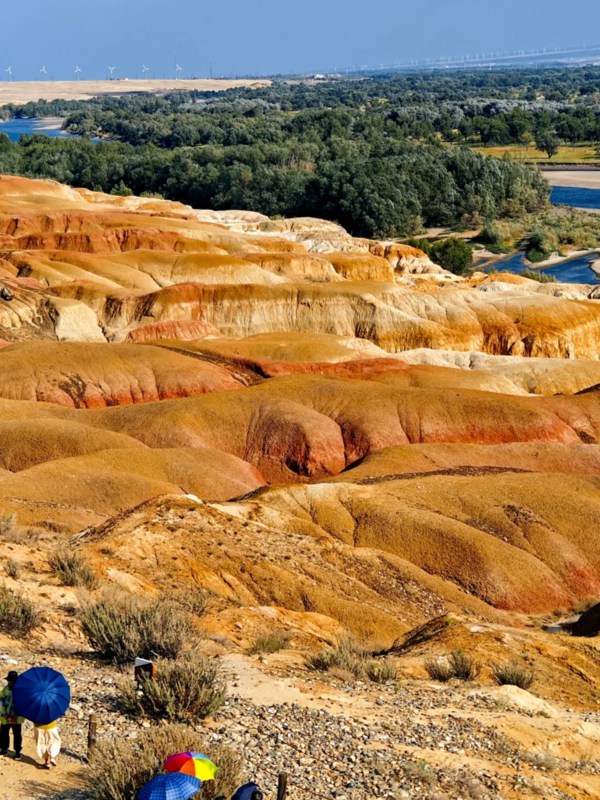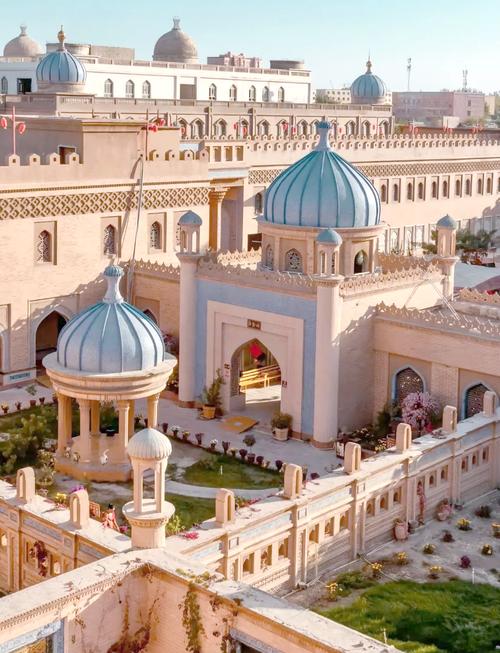
Kashgar
The air is thick with the bleating of sheep and the lively negotiations of Uyghur traders. Behind you, a vanishing call to prayer from Id Kah Mosque rings through the ancient Old City. No, it’s not a recreation of a museum. This is one of China’s most authentic Silk Road oases and a place that you shouldn’t miss during your trip to China. If you’re looking for things to do in Kashgar, you have found one of Asia’s best-kept secrets. Good news; there are experiences here that you will not find anywhere else in China.
This Silk Road city presents the last living museum of the culture. While most ancient trading posts have evolved into modern cities, Kashgar has retained its soul. You’ll stroll through 2,100 alleyways in the city where master coppersmiths hammer their metal by hand. You’ll eat local dishes that Marco Polo might well have enjoyed. Best of all, you’ll bargain in the ancient bazaars that have been trading for over a millennium. The things to do in Kashgar are steeped in history and culture, Instantly, your perception of diversity in China will change forever!
Quick Info: Kashgar at a Glance
| Topic | Summary |
| 🌍 Location | Situated in far western China, near the borders with Pakistan, Kyrgyzstan, and Tajikistan; a historic Silk Road crossroads. |
| 🏜️ Geology | Characterized by desert basins, loess plateaus, and proximity to the Pamir and Kunlun mountain ranges. |
| 🕌 Signature Landmarks | Id Kah Mosque, Old City alleys, Gaotai platform homes, Abakh Hoja Tomb, and the Pamir mountain lakes. |
| 🧕 Ethnic Culture | Predominantly Uyghur, blending Islamic traditions, music, dance, and handcrafted arts. |
| 🎉 Traditional Customs | Sleeve bargaining at bazaars, Friday prayers, local festivals, and family-centered courtyard gatherings. |
| 🍢 Local Cuisine | Lamb-driven dishes like samsa, polo, jiagezi rou, roast pigeon; strong flavors with cumin, onion, and wheat-based staples. |
| ⚠️ Cultural Etiquette | Avoid photographing people without permission; dress modestly at religious sites; be respectful during prayer times. |
| 🍀 Auspicious Notes | Green and blue colors are widely seen as positive; offering bread or dried fruit shows goodwill; greetings like “Yaxshimusiz” bring warm smiles. |
Wander Kashgar Old City — Daily Silk Road Life
- Kashgar Old City
- Rainbow Alley
- Gaotai Homes
What makes this place extraordinary is its authenticity. Unlike many "ancient towns" across China that have been demolished and rebuilt as theme parks, Kashgar's Old City underwent careful preservation starting in 2009. Engineers reinforced buildings against earthquakes while maintaining their original mud-brick character and traditional Islamic architectural features. Walking these narrow lanes at dawn, you'll hear the rhythm of real life—bread baking in tandoor ovens, craftsmen hammering copper, children playing, elders gathering for morning tea.
East Gate Ceremony — A Morning Ritual Reawakening Silk Road Spirit
Every morning at 10.30am (not Mondays) the East Gate is the scene of the re-enactment of this ancient ceremony, as cast members in traditional Uyghur attire emerge amid a crash of drums. Dancers in colourful, raw silk costumes twirl in time to traditional instruments while horsey merchants ride in through the arch, as if newly arrived from some Silk Road outpost.
Entrance is part of your Old City ticket (¥30 for foreigners). The ceremony is held year-round, unless extreme weather abounds. Photography is welcomed and encouraged—the scene is a riot of colour against the earthen architecture. Remember, come with an open mind. Sure, it’s a show, designed for you, the tourist. But there’s pride in it, and more importantly, you’re being let in on the slice of life that made this Silk Road crossroads what it was for millennia.
Rainbow Alley — A Bright Passage Mixing Color Play and Classic Architecture
Rainbow Alley has become the most Instagrammable spot in Kashgar for good reason. The narrow lane is adorned with walls splashed with blues, pinks and purples, a startling contrast from the drab earth tones of most of the Old City. The bright colours leap out at you from the traditional architecture.
Pay a visit well before 9 AM to avoid the throngs and to get pictures in pristine morning light – by 10 AM tour groups start parading through the alley and its overcrowded with people trying to snap pictures. The morning is also the most photogenic time, with the light softer and more even than in afternoons, when harsh shadows break up the colours. Local photographers recommend red and white dresses for maximum contrast with the blue!
Gaotai Homes — Layered Earthen Dwellings Rising Above the Old City
Gaotai climbs over 40 meters up a loess plateau within the Old City—one of the most jaw-dropping features of vertical earthen architecture in the world. Here homes older than 600 years are literally built on top of each other, stacked on ancient foundations, forming a neighborhood where the rooftops become the street along an entire other level. UNESCO recognized the antiquity and importance of the structure by adding to World Heritage tentative list.
Those who make it up to the viewing platform, which is at Gaotai’s highest point (¥20) will be rewarded with fantastic views across all of Kashgar. In the distance, the far-off snow-laden peaks of the Pamir—the horizon floats them—arise. Here, the Old City spreads below in an entanglement of earthen buildings. Interpretative signs in Chinese and scant English tell the story of the neighborhood and how it is made. There are benches where one can rest while perusing the view, but do take along water because it is a dauntingly steep climb.
While you explore Kashgar's unique life, are you curious about the capital's history? Find out what to see in this guide to Things to Do in Urumqi: Authentic Markets, Ancient Mummies, and Real Silk Road Culture beyond the airport.
Head Toward the Pamirs — High‑Altitude Wonders
- White Sand Mountain & White Sand Lake
- Karakul Lake
- Muztagh Ata Glacier
White Sand Lake — Pale Dunes Surrounding Striking Blue Water
After three hours of driving from Kashgar on the Karakoram Highway, you crest a hill before catching sight of it—White Sand Lake materializes like a mirage. The local people call it “Moon Lake” and upon seeing white sand dunes spilling into a watered down turquoise so vivid it looks surreal, you will see why. This beautiful brilliant color is natural, formed from minerals in the water.
It’s ¥30 plus ¥20 for the mandatory shuttle bus which takes visitors from the parking lot to viewing platforms. The bus ride is about ten minutes through desert landscape with hardy scrubs. The lake is at about 3,200 meters elevation—most people are fine at this altitude but you might feel your heart beating slightly faster when climbing the stairs to the viewing platforms. If this tranquil lake mirage has captured your heart, continue your journey north to discover the even grander views and nomadic life at Sailimu Lake in Xinjiang.
Karakul Lake — Calm Glacier Reflections Framing Muztagh Ata
Karakul Lake lies at 3,600m, where altitude will begin affecting a good many of us more seriously. It stretches dim and dour, and makes a perfect photographers’ mirror of Muztagh Ata, aka ‘Father of Ice Mountains’, the 7,546m travel news headline news dominant on the skyline. On still clear days the mountain reflection is perfectly symmetrical, a spiritual moment of natural beauty.
Be lucky with the weather; cloud usually shrouds the peak, especially during the afternoons when convection currents kick in. The chances of seeing a final peak shed its vestments are improved by early morning visits (before about 11am). Summer temperatures may drop to 5 or 6°C, and wind-chill will make it considerably colder, so take warm layers; fleece jacket minimum, windbreaker recommended.
Muztagh Ata Glacier — Towering Ice Fields You Can Walk Close To
The pièce de résistance is upon you at last at the huge mess that is Muztagh Ata Glacier. You drive right to the toe of the gigantic, calving glacier. House-sized chunks slide off with tremendous cracks that echoes down the valley. The scale is beyond human scope; the tongue of the glacier is 2 km wide and strides down from peaks that are permanently shrouded in snow and ice.
Muztagh Ata Glacier sits at about 3,800-4,000m depending on how close you get. This is where most people feel the altitude impact most. Ascend slowly, breathe deeply, and know you won’t walk very far before needing to stop. Organised glacier hikes with guides and crampons run ¥400-600 per person for a 2-3 hour trip out. Even the standard walk wears technical climbing gear and gets you close enough to touch ice that began forming a thousand years ago.
Follow Kashgar’s Spiritual Footprints — Religious and Historic Sites
- Id Kah Mosque
- Fragrant Concubine Tomb
- Iparhan Statue
Id Kah Mosque — A Central Place Anchoring Daily Worship and Community Life
Id Kah Mosque dominates Kashgar's central square with its distinctive yellow-tiled façade and towering minarets. Built in 1442 during the Ming Dynasty, this massive structure can accommodate up to 20,000 worshippers during major Islamic festivals. It stands as Central Asia's largest mosque and serves as the spiritual heart of Kashgar's Muslim community—a role it has fulfilled for over 580 years.
The architecture blends Central Asian, Middle Eastern, and Chinese Islamic styles in ways that reflect Kashgar's crossroads position. Notice the intricate wooden carvings on the pillared archway—each pattern tells stories from Islamic tradition. The courtyard gardens follow classic Islamic garden design with water channels and poplar trees providing shade and contemplation space. The yellow tiles that give the mosque its distinctive appearance were added during renovations, creating a warm glow that makes the building luminous at sunset.
Abakh Hoja Tomb — A Tile‑Clad Mausoleum Shaped by Legend and Faith
The grave complex officially referred to as the Abakh Hoja Tomb, it is better known as the Fragrant Concubine Tomb (香妃园), a romantic title it shares due to a legend that the hearts of men throughout the ages. According to the tale, a Uyghur woman Iparhan was so beautiful and naturally fragrant, that Qing Emperor Qianlong took her as his imperial concubine. She pined for her home until her death when the Emperor sent her body back to Kashgar and had her laid to rest here.
You’d be hard-pressed to find a more dazzling sight in Xinjiang than the main tomb building whose dome is covered in green-and-white coloured glazed tiles trim with with intricate geometry in the style of Islamic patterns. The tiles shine in the sunlight, almost twinklingly jewel like in appearance. The scale of the building is impressive, rising to over 26 meters in height and 35 metres in diameter. Islamic principles govern every aspect of the design, from the domes perfect proportions to the calligraphic inscriptions in Arabic that ribbon across the outside.
Step Into Bazaar Chaos — True Silk Road Trading Culture
- Sunday Livestock Market
- Grand Bazaar
- Kashgar Bazaar
Sunday Livestock Market — Candid Bargaining in a Century‑Old Trading Ground
Once a week, the northern suburbs of Kashgar become the largest scene for livestock trading in all of Central Asia. This is more than a tourist-friendly market that just happens to sell animals. Farmers from nearby villages and even from neighboring Kyrgyzstan come to town to sell their sheep, goats, cattle, horses, donkeys, and camels in an authentic market scene that appears little changed since centuries past.
You will still see the technique of “sleeve bargaining” employed here. Buyer and seller clasp hands inside the wide sleeve of one person, who signals to the other with his fingers while letting his face reflect nothing. The technique prevents others from knowing the terms of the deal—a practice that has accompanied merchants traveling along the Silk Road for more than a millennium.
Grand Bazaar — A Crowded Hub Blending Local Necessities and Handmade Crafts
The Grand Bazaar in downtown Kashgar is open every day, but hits fever pitch on Sundays when traders from across the region pour in. Piles and piles of things for sale, from hand-knotted carpets to traditional musical instruments, copper cookware, leather goods, textiles, dried fruits and spices, to innumerable styles of knife (many useful; many decorative).
A covered area protects shoppers from the sun, while stalls extend well into the surrounding streets, making an all-encompassing veritable bazaar.
Unlike many “bazaars” that have been sanitised to become somewhat distorted shopping malls, in Kashgar the real and the tourism friendly co-exist. Admittedly, some sections are tourist specific, but look more closely and you’ll find locals buying flour in 25-kg bags, farmers buying tools, families stocking up on dried goods for the winter months.
Eat Your Way Through Kashgar — Real Uyghur Flavors
- Jiagezi Rou
- Polo
- Roast Pigeon
Samsa — Oven‑Baked Lamb Buns With Crisp, Aromatic Crust
Humble yet delectable pyramid-shaped buns emerge from tandoor ovens with burning hot crispy, flaky crusts. Inside you’ll find juicy, cumin-flecked minced lamb mixed with crunchy onions and spices. Best eaten burning hot – blow on each bite before putting it into your mouth or you will burn yourself.
The tiny shop opposite the Century-Old Teahouse sells the city’s most delicious sambusa; locals queue here every morning. They’re only ¥2 each, but you’ll want at least three, and the scruffy owner starts baking them around 7am and sells out that day by ten. Cash only, he speaks no English but will understand if you point.
Jiagezi Rou — Hearty Lamb Stew Served in Retro Enamel Pots
Tender lamb chunks simmer with potatoes, peppers, and tomatoes in a personal-sized vintage enamel pot. The presentation alone charms—these colorful pots are retro Soviet-style relics that add nostalgic appeal.
Find excellent jiagezi rou at small restaurants lining the Old City's southern alleys. My favorite sits next to the Century-Old Teahouse. A hearty pot costs ¥25-30 and easily satisfies one person. The lamb falls apart at the touch of your spoon. Soak up the rich gravy with fresh naan.
Polo — Fragrant Rice Cooked in Lamb Fat and Sweet Carrot
Carrots, lamb, and rice cook together in lamb fat until the grains turn golden and slightly crispy on the bottom. The best pilaf balances sweetness from carrots, savoriness from meat, and richness from fat.
Ailizati Polo Restaurant near the Grand Bazaar serves outstanding polo. Order one serving (¥25) and rice refills come free. The restaurant packs with locals at lunch—always a good sign. The atmosphere is loud and chaotic, authentically local. Expect shared tables and minimal English.
Roast Pigeon — Night‑Market Grilled Birds With Smoky Notes
The meat is tender, slightly gamey, and absolutely delicious. Each bird costs ¥20-25. Eat it with your hands, pulling meat from bones while it's hot.
The Khan Bazaar Night Market (opening 8 PM) has the best roast pigeon stands. Pair it with cold Wusu beer (¥6)—Xinjiang's local brew. The market atmosphere adds to the experience: smoke swirling, vendors shouting, Uyghur pop music blasting.
Join Local Traditions — Cultural Activities to Connect With Local Life
- Hands-on Ceramics Classes
- Kashgar Carpet
- “Meet Kashgar” Show
Uyghur Dance Lessons — Gentle Movements Taught by Local Artists
Gulim's Family Guesthouse in the Old City offers Uyghur dance lessons (¥80 for one hour). An experienced instructor teaches basic moves—the shoulder shimmy, wrist circles, and turning techniques that define Uyghur style. You'll try on traditional costumes for photos afterward.
The lesson is surprisingly fun even if you have two left feet. The movements are more about expression than perfect technique. Music plays from a traditional dutar (lute), creating an authentic atmosphere. I initially felt self-conscious but ended up laughing through the entire session. Book through your hotel or message them via WeChat.
Craft Workshops — Guided Pottery and Carpet‑Knotting Sessions
The pottery workshop at Abakh Hoja Tomb offers hands-on ceramics classes (¥50, 45 minutes). An artisan demonstrates traditional Kashgar pottery techniques, then guides you in shaping your own small pot or bowl. The experience is meditative and surprisingly challenging. Your creation gets fired and can be collected the next day or shipped domestically (¥30 extra).
Carpet weaving demonstrations happen at various workshops inside the Grand Bazaar. Watching is free—artisans work at looms, showing the painstaking process of hand-knotting carpets. A skilled weaver completes about 10,000 knots per day. Large carpets require months of work, explaining their ¥5,000-20,000 price tags.
These workshops welcome questions and photography. Many artisans speak basic English or work with translators. Supporting them by purchasing even small items (¥100-300 pottery pieces, ¥300-500 small woven goods) directly helps preserve traditional crafts.
“Meet Kashgar” Show — A Theatrical Take on Silk Road History
This large-scale song and dance spectacular runs nightly at 8 PM in a purpose-built theater near the Old City. Tickets range ¥180-380 depending on seating. The 90-minute show dramatizes Silk Road history through elaborate costumes, acrobatics, and music.
Production values are impressive—flying dancers, LED screens, pyrotechnics. If you enjoy spectacle like Las Vegas shows or Beijing Opera, you'll appreciate this. It's thoroughly entertaining though culturally superficial. Skip it if budget is tight or you prefer authentic experiences over produced entertainment.
Book tickets through your hotel or online via Ctrip. Evening shows sell out on weekends during peak season. The theater has clear sightlines from most seats, though center sections (¥280-380) offer the best views.
Stay Length Recommendations Help Plan Your Trip
3 days is the minimum for hitting major highlights: one day for Old City and Id Kah Mosque, one day for Sunday Bazaar (arrive Saturday night or extend through Monday if needed), and one day for the Pamir Mountain trip or Abakh Hoja Tomb plus Gaotai.
5 days allows a more relaxed pace plus deeper Pamir exploration. Add day trips to Tashkurgan (ancient stone city near the Pakistan border), a second mountain day for hiking, and buffer time to wander the Old City at different times of day.
7+ days suits travelers combining Kashgar with the western Xinjiang circuit—Karakul Lake yurt stays, Taxkorgan, or even reaching Khunjerab Pass at the Pakistan border.
Sample 3-day itinerary:
- Day 1: Arrive, explore Old City, East Gate Ceremony, tea house, sunset at Id Kah Mosque
- Day 2: Sunday Bazaar (both livestock and grand sections)
- Day 3: Full-day Pamir Mountain trip to White Sand Lake, Karakul Lake, Muztagh Ata
Seasonal Guide Helps You Choose the Best Travel Time
Kashgar’s four seasons each offer a distinct travel vibe, so a quick overview helps you pick the perfect timing. Below is a simple table showing weather, scenery, pros, and cons for each season—ideal if you want a snapshot before planning your dates.
| Season | Weather | Highlights | Pros | Cons |
|---|---|---|---|---|
| Spring (Apr–May) | 15–25°C | Blossoms in valleys, village festivals | Great walking weather, colorful scenery | Dust storms, possible Pamir road closures |
| Summer (Jun–Aug) | 35–40°C | Fruit season, long daylight hours | Full Pamir access, vibrant markets | Heat, crowds, higher prices |
| Autumn (Sep–Oct) | 18–28°C | Golden poplars, clear skies | Best photography, mild weather | Short season, high demand |
| Winter (Nov–Mar) | -5–5°C | Quiet city, cultural festivals | Low prices, fewer tourists | Cold, Pamir closed, limited services |
Practical Tips Make Your Kashgar Trip Smoother
Getting to Kashgar — Key Transport Options and Arrival Tips
By Air: Kashgar Laining International Airport receives daily flights from Urumqi (2 hours, ¥500-800) and Beijing (5 hours, ¥1,200-2,000). Direct flights from Shanghai, Guangzhou, and other major cities operate 3-4 times weekly. Book at least two weeks ahead during summer and autumn. The airport sits 10 km northeast of downtown—taxi costs ¥40, or take airport bus #2 (¥10, 40 minutes).
By Train: The overnight train from Urumqi takes 24 hours with hard sleepers costing ¥300-350. The journey crosses Xinjiang's desert heartland with occasional dramatic mountain views. Trains book fast—reserve at least a week early. I recommend flying to Kashgar and training back to Urumqi if you want the rail experience without wasting precious travel time.
Foreign tourists face fewer restrictions in Kashgar than in past years. You no longer need travel agency assistance for independent visits to the city itself. However, Pamir Mountain trips still require border permits arranged through agencies.
Staying in Kashgar — Lodging Picks Across Different Budgets
| Category | Price Range | Key Features | Examples |
|---|---|---|---|
| Budget | ¥80–150/night | Clean dorms and private rooms; social common areas; simple breakfast; great Old City location | Kashgar Pamir Youth Hostel |
| Mid-range | ¥250–450/night | Traditional architecture with modern comforts; courtyard dining; English-speaking staff | Gulim's Family Guesthouse, Kashgar Old City Youth Hostel, Yining Grand Hotel |
| Comfort | ¥600+/night | Full modern facilities; strong WiFi; Western bathrooms; convenient access to sights | Yinruiyin International Hotel |
Restricted Zones — Areas With Limited or No Tourist Access
The border permit (边防证 - bian fang zheng) is mandatory for entering the Pamir region past a certain checkpoint.
Recommended agencies include Kashgar Travelers Café (they also run the hostel) and any agency your hotel suggests.
Some Pamir trips additionally require a licensed guide to accompany foreign tourists.
No permits are needed for attractions within Kashgar city itself.
Frequently Asked Questions About Things to Do in Kashgar
Q: Is Kashgar worth visiting?
Kashgar rewards travelers who enjoy deep culture and old-world charm. The city offers living Silk Road history, vibrant Uyghur traditions, and striking desert scenery. Its alleys feel different from mainstream China, with Islamic architecture and Central Asian flavors everywhere. Photographers and food lovers enjoy every corner. Visitors seeking nightlife or luxury may feel limited, yet most travelers find the cultural depth unforgettable.
Q: Can foreign tourists go to Kashgar?
Foreign tourists can visit Kashgar with a valid Chinese visa. Independent travel is allowed for city attractions, and checkpoints are routine. Some remote Pamir areas require a border permit and sometimes a guide. Agencies handle these formalities quickly. Policies shift occasionally, so checking recent traveler updates helps. Most visitors move freely and enjoy a smooth trip.
Q: What is Kashgar famous for?
Kashgar is known for its preserved Silk Road heritage and Uyghur culture. The Old City carries over two millennia of history, with unique architecture and family workshops. The Sunday Bazaar draws traders and visitors from across Central Asia. The city also offers access to the Pamir Mountains and the stunning Karakoram Highway. Many travelers remember its cultural richness long after leaving.
Q: How many days should I visit Kashgar?
Three to four days work best for most travelers. This gives time for the Old City, Id Kah Mosque, and the Sunday Bazaar. A full Pamir day trip also fits comfortably. Travelers with tighter schedules can rush key sights in two days. Longer visits let you explore deeper and enjoy slower days. Weekend timing matters if the bazaar is important.
Q: Is Kashgar safe for tourists?
Kashgar is generally very safe for visitors. Crime rates remain low, and violent incidents are rare. Security checks appear often but move quickly. Petty theft is possible in crowds, so basic precautions help. Medical care is adequate for normal needs, though major issues may need Urumqi. Altitude risks exist on Pamir trips, so preparation matters.
Q: What should I wear in Kashgar?
Modest clothing fits local customs and keeps you comfortable. Women often choose loose pants, long skirts, and light tops. Men usually wear long pants and simple shirts. Lightweight fabrics work well in summer heat. Evenings can feel cooler, so light layers help. Pamir trips require warm jackets. Avoid short or revealing outfits to respect local culture.
Q: Do people speak English in Kashgar?
English is limited outside hotels and tour agencies. Many locals speak Uyghur first and Mandarin second. Translation apps help with menus and directions. Learning basic Mandarin or Uyghur phrases improves interactions. Simple greetings often make locals smile. Hiring guides solves language issues entirely. Travelers adjust quickly with patience and tools.
Q: Can I visit Kashgar independently or do I need a tour?
Independent travel works well inside the city. You can book hotels, walk the Old City, and eat anywhere freely. Pamir trips require border permits arranged by agencies. Some areas also need a licensed guide. Combining DIY city travel with agency mountain trips works best. Travelers without Mandarin may benefit from guides for smoother days.
Q: What’s the best time of year to visit Kashgar?
September and October offer the best mix of weather and scenery. Spring also feels pleasant with mild temperatures. Summer brings heat and crowds but offers full Pamir access. Winter is quiet, cold, and cheaper, though some roads close. Avoid major Chinese holidays to escape peak crowds. Most travelers enjoy the region most in autumn.
Q: How do I get a border permit for the Pamir Mountains?
Foreigners must obtain permits through local agencies. Hotels can recommend reliable offices. Agencies handle paperwork using your passport, photos, and itinerary. Processing usually takes several days, so plan ahead. Fees are modest and often included in tour packages. Keep the permit with your passport for checkpoints. Some areas also require licensed guides.

